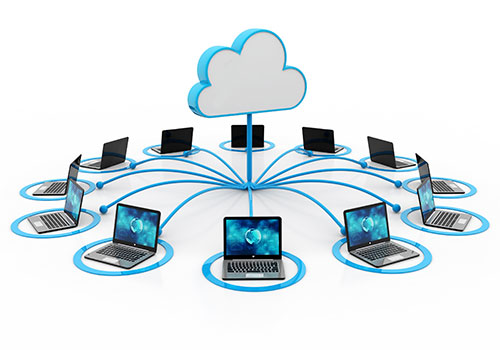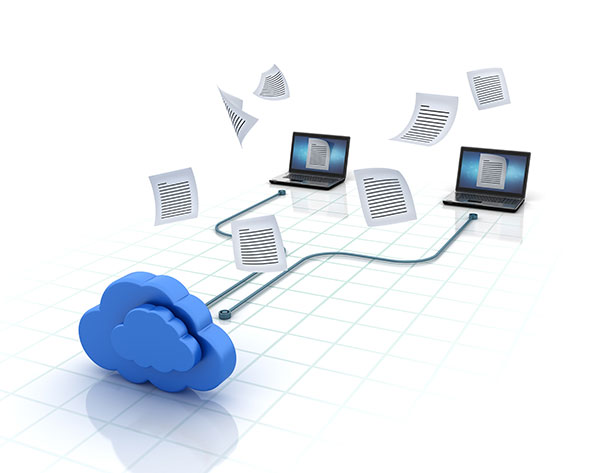Opportunities and Challenges for Cloud Adoption in the Indian Government
Publish Date: December 21, 2018Governments around the world including in India are grappling with massive amounts of data that need to be processed and utilized properly owing to their outdated hardware and software, badly designed IT architecture and poor operating practices regarding accessing that data. Any major transformation in technology requires people to change and has cultural as well as technological challenges when it comes to embracing the cloud. Addressing technology challenges is easy but making people want to do something different is the difficult part. The speed of implementation of cloud computing in the government sector is slow compared to private organizations.
Opportunities for Cloud Adoption
- In India, all the sectors including Education, SME, Healthcare, & Government are looking at moving ahead and will significantly benefit from Cloud adoption. Goal is to increase literacy to more than 75% by the end of year 2020. Education vertical cloud-based services can be utilized for offering education through remote & virtual classrooms to increase literacy rate over more than 75% from its current levels.
- The health industry is also on the fast progression track and can utilize the cloud to create a national citizen health database. Cloud can help to enable telemedicine services to provide healthcare services in remote areas of the country where resources are in short supply.
- Government agencies can leverage cloud infrastructure to quickly & effectively roll-out new services & schemes and can be utilized for collaborative working across geographically distributed offices. E-governance applications make them suitable for Cloud due to a large distributed user base. Software deployment, Implementation & rollout to multiple offices can be speeded up by Cloud-based solutions.
- Digital transformation is recognized as vital to the growth of our nation. Digital India envisions creating high-speed digital highways, that will impact commerce and create a digital footprint for every individual. Technologies based on mobility, analytics, Internet of things and most importantly, cloud technologies are the building blocks for the digital India mission. There is a growing need to manage huge volumes of data, and making them readily available to the public through digital cloud services.
- While Data centers have become crucial to this transformation, decreasing load to adapt to ever-increasing demand is the principle many government IT managers use to make data centers more efficient, flexible and capable of delivering new services.
- Different applications commonly used in government functions require different types of resources and performance levels. An agile government is one that is aligned with the fast-paced changes in citizen and employee expectations for services. Cloud has demonstrated the capability to digitize the governance while being cost-effective.
- E-government has been adopted globally by developed as well as developing countries. Many studies reveal that the e-government not only improves the efficiency of public administration but also the practice of good governance, like increased transparency, reducing administrative corruption, improved service delivery, improved civil service performance, citizens empowerment, and government finance. An e-government system needs proper information and communication technology (ICT) infrastructure, and normally the government has to own, manage and maintain the system and infrastructure. This can be very costly. Also, investment in system and infrastructure needs to be wisely decided as the conventional ICT infrastructure is quite rigid. If the system is too large, it will be under use, wasting resources. However, if the system is too small, scaling up is not straightforward.
- Technology can support the government’s initiatives in key areas of the program including rural internet connectivity, digital cloud services for all and communications and productivity services for the government. Bringing cloud services – Microsoft Azure, Dynamics and Office 365 – to local data centers in India can accelerate cloud innovation, connect every Indian and every Indian business to the world through the global hyper-scale cloud.
- Various departments in the government do not have the right technical resources and strengths. Many Indian projects like Indian Railway, Aadhaar would benefit enormously from cloud computing. Also, creating more and more servers for information sharing will be helpful for government and citizen of India.

Advantage Cloud Computing for the Government
- One of the main advantages of cloud computing for the government is the cost saving for running e-government as the computing resources are outsourced to cloud providers resulting in reduced expenditures and maintenance cost.
- A simple, more flexible system and quicker scaling ability as compared to the conventional computing system as the resources are outsourced to a cloud provider, and the needed capacity can be fulfilled on demand.
- Maintaining computing resources is the job of the cloud provider and is done without service interruptions as the provider can shift its computing resources easily.
- Expanding or shrinking computing resources used in running cloud-based e-government system can be done easily and quickly as the government need only to contact the cloud provider to do it.
- The simplicity of cloud computing can make the government focus more on its core business, serving the citizens.
- Agility is another benefit of cloud computing, and the government can quickly and effectively respond to demand for a more rapid response to citizens’ needs.
- Reliability and availability as e-government services are generally accessible through the Internet regardless of time and place.
- Disaster recovery, recovery from data loss during a disaster can easily be supported by cloud computing as it is supported by myriads of servers co-located in different locations.
- Migration to new technology is seamless, at no extra cost and the interruption of services not necessary. Cloud computing service providers normally keep their system up to date, and updates to the system will not affect services.
Challenges of Cloud Computing
- The first challenge is the government losing control of data. This can be a big issue as trust can be the primary key for adoption of cloud computing, and since data is stored in the cloud, the government needs to reassure of data protection on the same level if the data is stored locally.
- The second issue is security and privacy since government and its data are separated, and the data can be accessed through an open network such as the Internet, the issue highly affects the confidence in using cloud computing. Security problems may happen in servers within the cloud, the client machines, and the network. Security issues on cloud computing can be divided into four categories: security related to a third-party resource, application security, data transmission security, and data storage security.
- The third is performance, especially for data-intensive computation as client machines are geographically distanced, which could be a thousand miles away from the cloud. Internet speed also affects performance. The possibility of data transfer bottlenecks as the intensity of data processing and transfer as well as the number of users accessing the data increase may complicate the performance and increase costs.
- Cloud is also feared for multitenancy, bugs in hypervisors and leakages as everything is connected to the internet.
Research indicates that over the last two years, the public cloud services market in India has seen phenomenal growth–reaching $1.8 billion in 2017, up from $1.3 billion in 2016. By 2020, this figure is expected to reach $4.1 billion. Today, India is second only to China as the largest and fastest-growing cloud services market in the Asia Pacific. Global majors such as Google, Amazon, and Microsoft have all opened data centers in the country. Although the country is still overcoming inconsistencies in power supply, high-speed internet connectivity, bandwidth, and optical fiber connections, interest in the cloud is being driven by the increasing need for business innovation and agility, the ability to scale fast in a competitive market, and the government’s thrust towards Digital India.

India is the current demand for many cloud providers and vendors such as Microsoft Azure, AWS, and IBM, etc. are already establishing their presence everywhere. India’s investment climate is set to improve with regular policy push from the government, considering the Indian government recently launched initiatives that enable development by harnessing technology to create smart outcomes, all of this and Digital India is right on track to do its best on the Cloud.
Get more than what you think with YASH Cloud Services
Anantha Yellapragada – Country Manager – Delivery@YASH Technologies
Reference : www.forbes.com


















